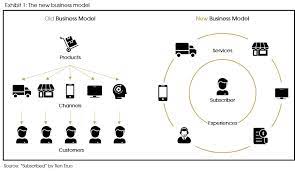In recent years, there has been a shift in the way businesses are approaching revenue generation. Gone are the days of one-time sales and transactions; instead, many companies are embracing the subscription model as a way to create recurring revenue streams. This trend has come to be known as the subscription economy, and it’s changing the way we think about business.
At its core, the subscription economy is all about creating ongoing relationships with customers. Rather than selling a product or service once and then moving on, companies that operate in this space are focused on building long-term, mutually beneficial partnerships with their customers. This requires a different mindset than traditional business models, one that is more focused on customer satisfaction and retention than on short-term sales goals.
One of the biggest advantages of the subscription economy is the predictability of revenue streams. With a traditional business model, revenue can be unpredictable and uneven, making it difficult to plan for the future. However, with a subscription-based business, revenue is more consistent and reliable. This allows companies to plan for growth and invest in long-term strategies with greater confidence.
Another key advantage of the subscription economy is the potential for increased customer loyalty. By offering ongoing services or products that meet the needs of their customers, companies can build strong relationships with their clients. This can lead to increased trust and loyalty, which in turn can drive more revenue and referrals.
The subscription economy has proven to be successful across a wide range of industries. From streaming services like Netflix and Spotify, to meal delivery services like Blue Apron and HelloFresh, to software companies like Microsoft and Adobe, businesses of all kinds are embracing the subscription model. Even traditional brick-and-mortar businesses are getting in on the action, with companies like Dollar Shave Club and Birchbox offering subscription-based products that are delivered right to customers’ doors.
Of course, the subscription model isn’t without its challenges. One of the biggest hurdles for companies is attracting and retaining customers in an increasingly crowded market. With so many subscription-based services available, it can be difficult to stand out and differentiate from the competition. This means that companies must focus on delivering a high-quality product or service, and providing exceptional customer service to keep their customers happy.
Another challenge is the potential for revenue stagnation. While the predictability of revenue streams is an advantage, it also means that companies must constantly work to attract new customers and upsell existing ones in order to maintain growth. This requires a strategic approach to marketing and customer acquisition, as well as ongoing investment in product development and customer support.
Despite these challenges, the subscription economy shows no signs of slowing down. As consumers become more accustomed to paying for ongoing services rather than one-time purchases, companies that operate in this space are well-positioned for long-term success. By focusing on customer satisfaction, building strong relationships, and delivering high-quality products and services, businesses can capitalize on the recurring revenue model and thrive in the subscription economy.
